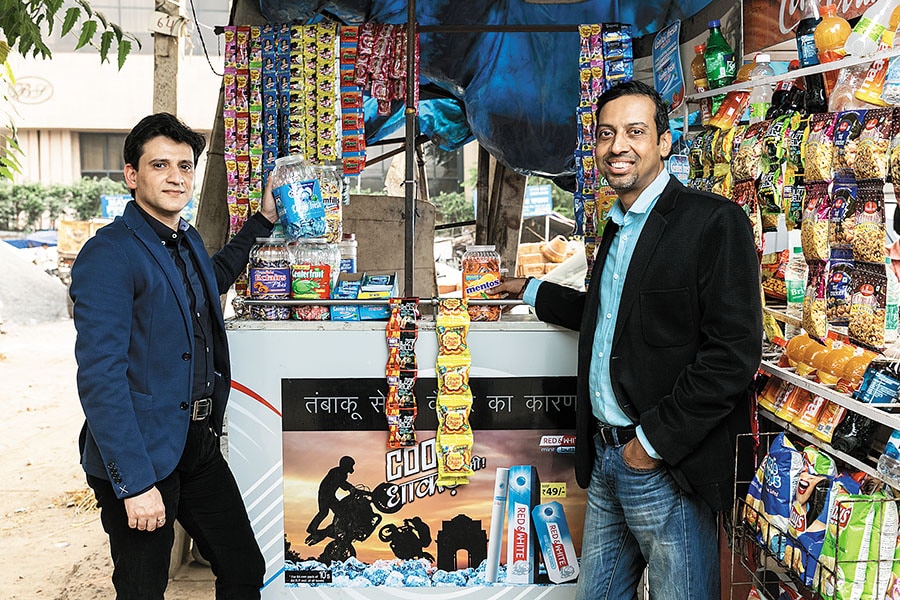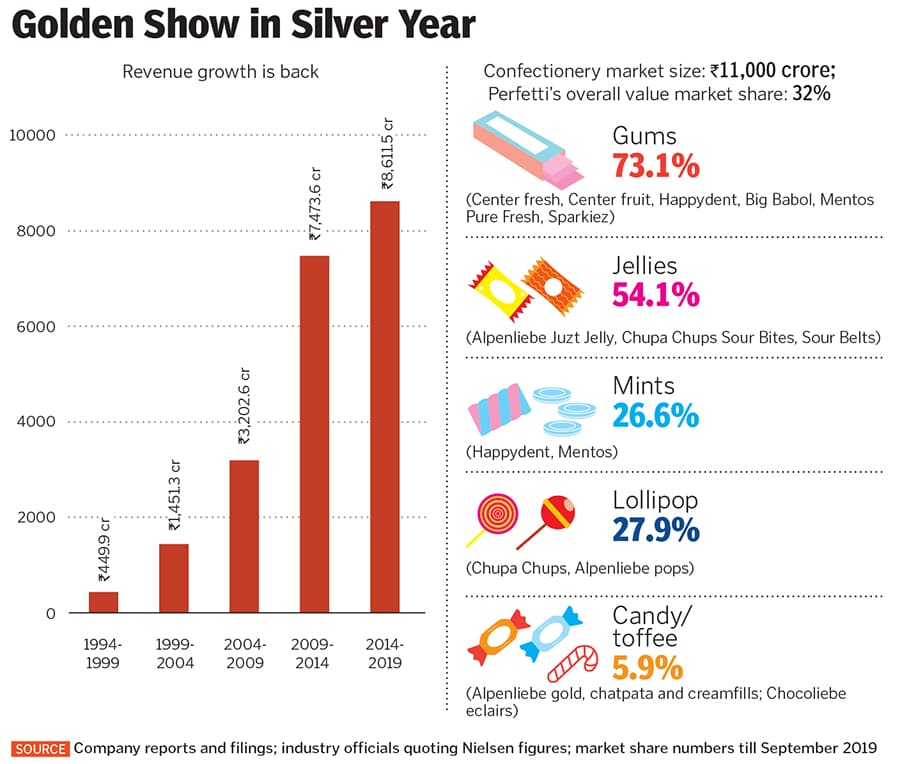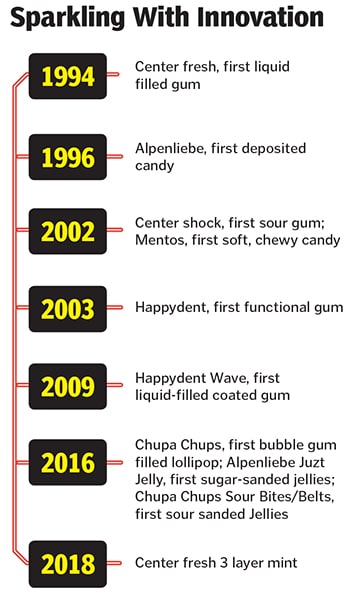
For Perfetti in India, it's Happy and No Dent
After battling macroeconomic headwinds for three years, Italian confectionery major Perfetti Van Melle hits a high-growth trajectory in India
 Rajesh Ramakrishnan (right), managing director, Perfetti Van Melle India, and Rohit Kapoor, director-marketing. The former says the company’s ambition is to continue to grow faster than the category. “That’s the most critical thing.” Image: Madhu Kapparath
Rajesh Ramakrishnan (right), managing director, Perfetti Van Melle India, and Rohit Kapoor, director-marketing. The former says the company’s ambition is to continue to grow faster than the category. “That’s the most critical thing.” Image: Madhu Kapparath
It was sometime in October 2017. The change of season in Delhi—winter was about to set in—coincided with winds of change blowing strongly across the India operations of Italian confectionery major Perfetti Van Melle. Over 200 staff, gathered at a hurriedly-called town hall in a five-star hotel in south Delhi, had a whiff of what was coming. The buzzword was transformation. While the employees were on the edge, the top management had its task cut out.
Perfetti, the maker of Happydent, Center fruit and Center fresh chewing gum brands, had seen muted growth over the last three years, with sales crawling from fiscal 2015; in 2017 they stood at ₹1,700 crore, just ₹10 crore more than the number in 2015. This was in stark contrast to the double digit growth rates Perfetti was accustomed to since its India debut in 1994. However, a deadly cocktail of demonetisation, tepid rural demand, a slowing economy and rising commodity prices was taking a toll. The company needed a reboot.
The immediate task for Rajesh Ramakrishnan, who was shifted from Bangladesh to India as chief transformation officer in August 2017, was to ease the nerves. “It was a growth-oriented strategy, not a cost-cutting one,” recounts Ramakrishnan, who was elevated as India managing director (MD) last July.
The much-anticipated town hall address started. The then MD Ramesh Jayaraman didn’t cut any slack in the assessment of the grim situation. “Growth,” he sternly pointed out, “had started to slow down and there was pressure on profitability.” There is a need to rethink, he continued, about the way the company is dealing with the business. Employees, on tenterhooks, expected pink slips. However, Jayaraman allayed those fears. “We are trying to transform ourselves,” he underlined, into a company with sustainable and profitable growth. Sparkle, the project on which the business transformation plan hinged, had been flagged off.
Cut to 2019. Sparkle is now making Perfetti happy by ensuring there is no dent in growth. The company closed fiscal 2019 with a revenue of ₹1,847.9 crore, around 10 percent more than the previous year. Leadership has been consolidated in key categories like gums, jellies and mint, and the retail footprint now stands at 4 million outlets indirectly and almost a million outlets directly. In 2017, the corresponding number for direct outlets stood at 650,000.
Sparkle, insists Ramakrishnan, was designed to reignite the spark. “The idea was to make the business grow faster, and make it more profitable. And it has delivered,” claims the 50-year-old MD, without revealing profit numbers.


















